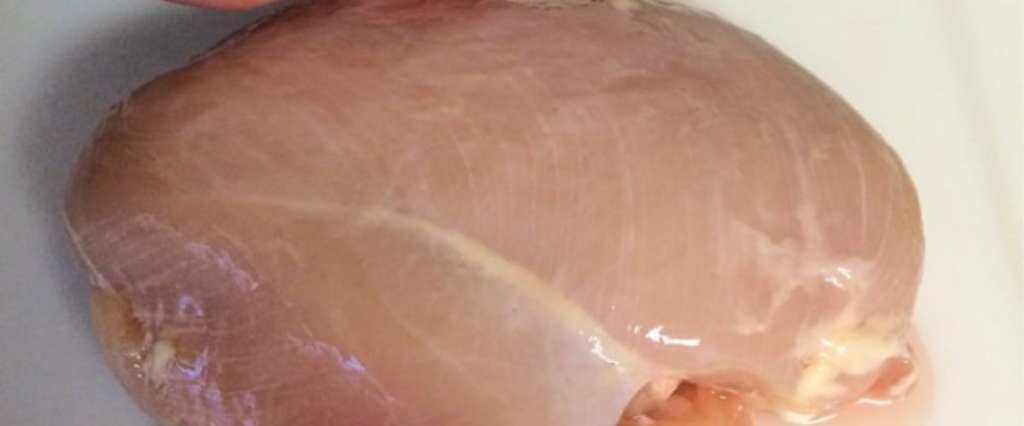Though I am a meat eater, I confess to being squicked out by raw chicken breasts. I’m not sure whether it’s because I once spent way too many miles behind a chicken truck, or maybe it’s just that too many of my friends own chickens now and honestly, they seem to have distinct personalities.
Either way, when you’re looking at a raw chicken breast, it’s easy to start wondering what’s normal, and what could be signaling salmonella – so we’re here to explain what those white stripes actually mean.

Image Credit: iStock
It turns out, they actually signal the fat content in your supposedly healthy, lean bird.
The “white striping” occurs when factory farmers overdo the selective breeding, causing their chickens to grow too fast and too large. Compassion in World Farming (and others) frown on the practice, because it creates poor health for the chickens while they’re alive, including a muscular tissue disorder that shows up as white lines through the meat.

Image Credit: iStock
They can leave your breast with a striped appearance that resembles the grain in a piece of wood.
The disorder isn’t just bad for chickens, either. University of Bologna scientists reported back in 2013 that chickens who display the white stripes contained more than 224% higher fat content. That said, the condition remains fairly rare – at least extreme instances of it – and chicken still has lower cholesterol and less saturated fat that any of the red meats.
If you’re looking to reap the benefits of your chicken, though, check it for those stripes before you bring it home from the supermarket.
Your health, and the birds, if they were still alive to talk, will surely thank you.






